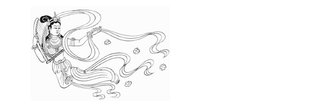Buddhist Narratives in Central Asia and China

In the propagation and spread of Buddhism throughout Asia, narratives in the form of ‘stories’ played an eminent role, both in the form of texts and images, and in the interplay between these two media. The accounts and depictions of the selfless acts of the Bodhisattva in his countless former lives (jātaka) during which he accumulated merit sufficient to be reborn as Śākyamuni and gain enlightenment, and the great deeds of other Buddhist heroes described in the avadāna texts enjoyed tremendous popularity. This type of stories initially also played a main role in the transmission of Buddhism to Central Asia and China, judged by the frequency of their translations and extant iconographical representations at Buddhist sites. From the early Táng onwards, one can observe a certain decrease of interest in the jātaka and avadāna, paralleled by the emergence of new types of narratives, based on the most popular Mahāyāna sūtras; these so-called ‘(Sūtra) Transformation Texts’ (biànwén 變文) and their iconographic counterpart in the form of ‘(Sūtra) Transformation Tableaux’ (biànxiàng 變相) became the dominant narrative genres from mid-Táng onwards. The project will mainly focus on another set of narratives dealing with historical projections on the origin and transmission of Buddhism, and reflecting important concerns during the later part of the Táng Dynasty. These imaginations on transmission and conversion processes as evidenced on the murals of Dūnhuáng and related manuscripts coincide with the emergence of sectarian transmission histories. Several kinds of material, both reflected in manuscripts and Dūnhuáng wall paintings, are extant; topics include the transmission histories of ‘Auspicious Statues’ (ruìxiàng 瑞相), stories on conversion and protection of the Dharma, the establishment and localization of Buddhism in China, and the travels of important monks and missionaries.

